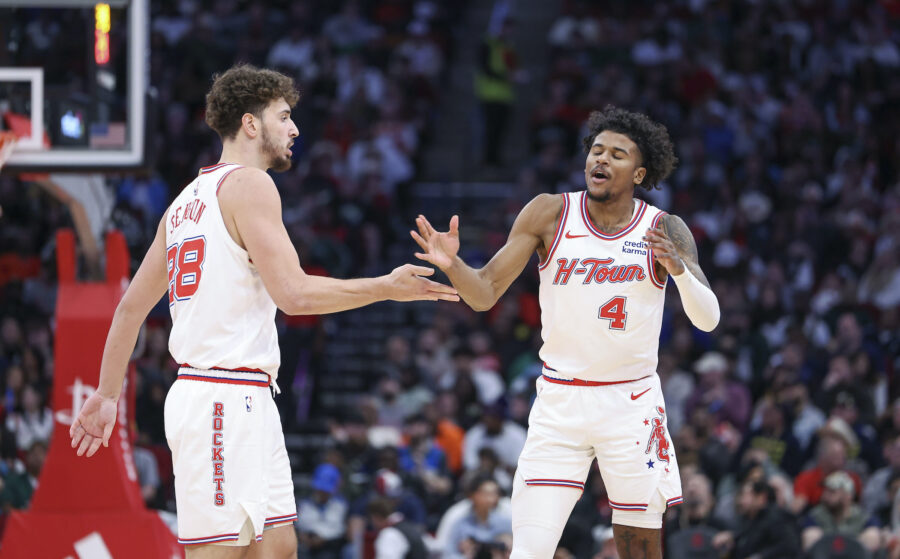The term “poison pill” doesn’t actually show up in the NBA’s Collective Bargaining Agreement, but it’s used colloquially to refer to a provision in the CBA that affects players who recently signed rookie scale contract extensions.
As we explain in our glossary entry, the so-called poison pill provision applies when a player who signed a rookie scale extension is traded before the extension takes effect.
In that scenario, the player’s incoming value for the receiving team for matching purposes is determined by averaging his current-year salary and the salaries in each year of his new extension. His current team, on the other hand, simply treats his current-year salary as the outgoing figure for matching purposes.
For instance, Rockets big man Alperen Sengun is earning a $5,424,654 salary in 2024/25, but signed a five-year, $185MM extension that will begin in ’25/26.
Therefore, if Houston wanted to trade Sengun this season, his outgoing value for salary-matching purposes would be $5,424,654 (this year’s salary), while his incoming value for the team acquiring him would be $31,737,442 (this year’s salary, plus the $185MM extension, divided by six years).
[RELATED: 2024 NBA Rookie Scale Extension Recap]
Most of the players who signed rookie scale extensions aren’t realistic candidates to be traded anytime soon. But even in the event that a team does want to look into trading one of these recently extended players, the gap between the player’s incoming trade value and outgoing trade value could make it a real challenge to find a deal that works for both sides — especially if a team is operating in or near tax apron territory.
The “poison pill” provision applies to 11 players who signed rookie scale extensions in 2024. Here are those players, along with their outgoing salaries and incoming salaries for trade purposes:
| Player | Team | Outgoing trade value | Incoming trade value |
|---|---|---|---|
| Cade Cunningham | DET | $13,940,809 | $37,827,796 |
| Jalen Green | HOU | $12,483,048 | $29,454,095 |
| Evan Mobley | CLE | $11,227,657 | $37,375,604 |
| Scottie Barnes | TOR | $10,130,980 | $37,192,825 |
| Jalen Suggs | ORL | $9,188,385 | $26,614,731 |
| Franz Wagner | ORL | $7,007,092 | $36,672,177 |
| Moses Moody | GSW | $5,803,269 | $10,825,817 |
| Corey Kispert | WAS | $5,705,887 | $11,951,177 |
| Alperen Sengun | HOU | $5,424,654 | $31,737,442 |
| Trey Murphy | NOP | $5,159,854 | $23,431,971 |
| Jalen Johnson | ATL | $4,510,905 | $25,751,818 |
Once the 2025/26 league year begins next July, the poison pill provision will no longer apply to these players. At that time, the player’s ’25/26 salary would represent both his outgoing and incoming value.
Until then, the gap between those outgoing and incoming figures will make it tricky for several of these players to be moved, though it affects some more significantly than others.
The difference of nearly $30MM between Wagner’s incoming and outgoing trade figures, for instance, means there’s essentially no chance he could be dealt to an over-the-cap team in 2024/25 — given that the Magic have no desire to move Wagner, that’ll be a moot point, but it’s still worth noting.
On the other hand, the much smaller divide between Moody’s incoming and outgoing salaries makes a trade involving him a more viable option, though the Warriors will have a hard cap to deal with that could complicate matters in they event they look to include Moody in a deal.





